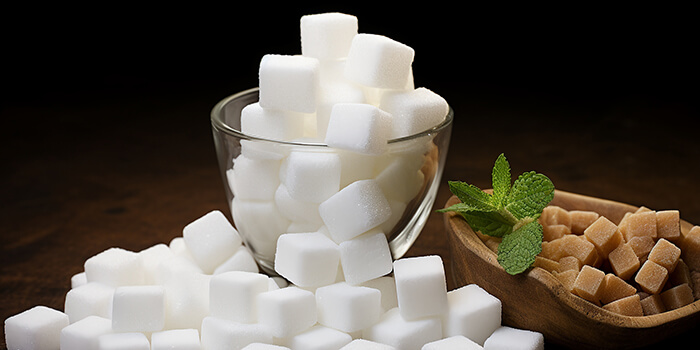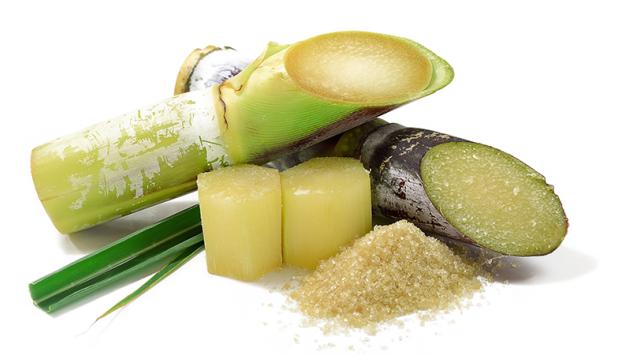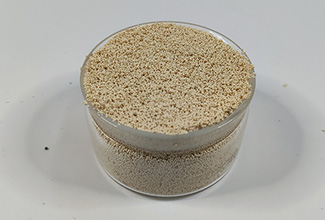Sugar Decolorization Resin: Revolutionizing the Sugar Production Process
In the sugar industry, sugar decolorization is a key step in the production of white sugar from sugarcane, which is directly related to the quality, flavor and market value of the finished sugar. The color in the raw sugar solution mainly originates from natural plant pigments, as well as melanin, melanoidins, caramel and invert sugar degradation products produced during processing. The removal of these color-presenting substances is a necessary prerequisite for the production of high-purity white granulated sugar crystals. In this paper, we will discuss the main methods of sugar decolorization and highlight the superior advantages of ion exchange resins in this field.

The Main Methods Of Sugar Decolorization
Activated Carbon Decolorization
Activated carbon is a commonly used material for sugar decolorization due to its porous structure. It adsorbs pigments, proteins and other impurities in sugar syrup on a non-polar surface by van der Waals forces.
The process of activated carbon decolorization is relatively simple: first, the syrup is pretreated to remove large particles and suspended solids; then the activated carbon is added to the syrup and stirred thoroughly to ensure that the two are in full contact; and finally, the adsorbed pigments are separated from the syrup by filtration. This method is low cost and particularly effective for hydrophobic pigments, but there is the problem of more solid waste and frequent replacement.
Ion Exchange Resin Decolorization
The decolorization principle of ion exchange resin is based on the dual mechanism of ion exchange and molecular adsorption. Under alkaline conditions, most of the pigments in the syrup are in anionic state and can be captured by strongly alkaline anion exchange resins. These resins have a reticulated polymer structure with charged functional groups that attract and immobilize pigment molecules.
The Two Main Types Of Ion Exchange Resins
Styrene-based resins: Highly selective for sugarcane pigment components, they are highly efficient in removing pigments and significantly reduce the final color of the syrup. However, due to its high selectivity, it is also more susceptible to organic contamination, and good regeneration treatment is the key to maintaining its performance.
Acrylic resin: moderate selectivity, high regeneration efficiency, can effectively remove a large number of pigments in the syrup, but usually not applicable to the pursuit of very low exit coloration scenario.
During the ion exchange process, the syrup flows through the resin column and the pigments are adsorbed on the resin surface. Subsequently, the resin is regenerated by chemical solutions such as hydrochloric acid and sodium chloride to restore its adsorption capacity. This method is clean and hygienic, easy to automate, reduces sugar loss and energy consumption compared to activated carbon decolorization, and the resin can be reused to reduce solid waste generation.
Other Decolorization Technologies
Bone charcoal: Bone charcoal used to be a common material for sugar decoloration, but its use has declined considerably due to ethical issues (animal origin) and operational complexity.
Oxidizers: Although they can break down pigments, they may lead to sugar degradation and are somewhat limited in practical application.
Significant Advantages Of Ion Exchange Resins Over Activated Carbon

Lower Operating Costs
Ion exchange resin systems are lower than activated carbon methods in terms of energy consumption, labor requirements and maintenance costs. The high degree of automation significantly reduces labor input, which significantly lowers overall operating costs in the long run.
Reduced Sugar Loss
The technology effectively reduces sugar loss during decolorization and increases the output rate of finished sugar, bringing higher economic benefits to the enterprise.
Higher Process Efficiency And Flexibility
The ion exchange resin has excellent removal ability for both high and low molecular weight impurities, and the system design can be flexibly adjusted according to the initial and target color of the sugar syrup to ensure stable and efficient decolorization effect.
Cleaner Operation and Less Waste
Unlike activated carbon, which needs to be replaced periodically and generates solid waste, ion exchange resin can be reused through regeneration, which greatly reduces the amount of waste and lowers the impact on the environment.
Stable Product Quality
Both styrene- and acrylic-based resins achieve extremely low final coloration and can effectively cope with seasonal color fluctuations of raw sugar, ensuring stable product quality.
Good Physical Durability
Modern ion exchange resins have excellent physical strength to withstand harsh operating conditions and have a long service life, reducing problems such as pressure drop due to resin bead breakage.
Advanced System Design
Continuous ion exchange systems further optimize chemical consumption, water usage, and waste generation through countercurrent contact and regeneration, resulting in a significant increase in efficiency compared to batch activated carbon processes.
Conclusion
Sugar decolorization, as a core part of the sugar production process, directly affects the quality of the final product. Activated carbon adsorption and ion-exchange resin treatment are the two mainstream technologies at present. Activated carbon occupies a certain market by virtue of its low cost and ease of operation, while ion exchange resin shows significant advantages by virtue of its higher efficiency, lower operating costs, more environmentally friendly features and stable control of product quality. Ion exchange resin technology is expected to gain wider application in the future as the sugar industry continues to improve its environmental protection and efficiency requirements. Through continuous optimization of the resin system and exploration of innovative processes, the sugar decolorization technology will move forward in the direction of higher efficiency and greener.
-
.png) Anionic Polyacrylamide ResinPurity : 99.9%Color : WhiteMelting Point : >150°℃
Anionic Polyacrylamide ResinPurity : 99.9%Color : WhiteMelting Point : >150°℃ -
.jpg) Super Absorbent Polymer SAP for AgriculturalMain ngredient:Potassium PolyacrylatePhysical Property:Non-toxic,NonpollutingFunction:Drought control /Saving water /Soil conditioner
Super Absorbent Polymer SAP for AgriculturalMain ngredient:Potassium PolyacrylatePhysical Property:Non-toxic,NonpollutingFunction:Drought control /Saving water /Soil conditioner -
 Chelating Resin for Precious Metals RecoveryAppearance: Milky to light yellow opacity spherical beadsIonic form:Na+Volume complete exchange capacity(mmol/ml):≥2.0
Chelating Resin for Precious Metals RecoveryAppearance: Milky to light yellow opacity spherical beadsIonic form:Na+Volume complete exchange capacity(mmol/ml):≥2.0

